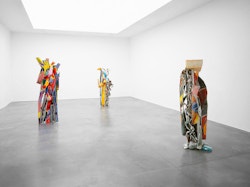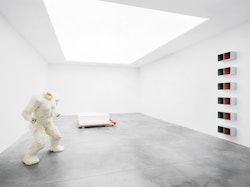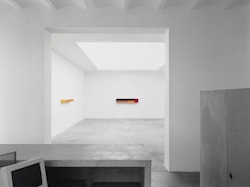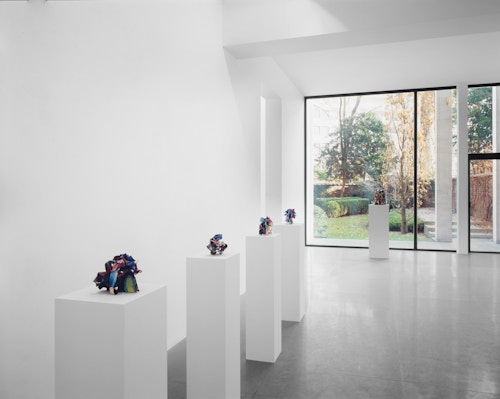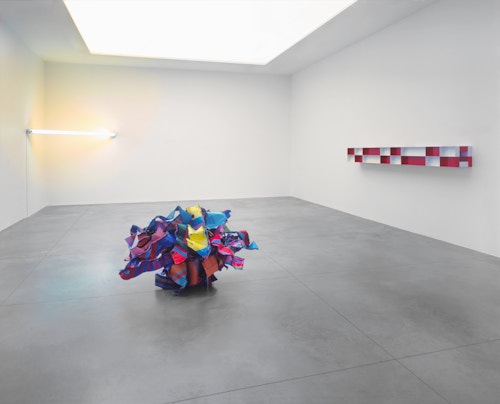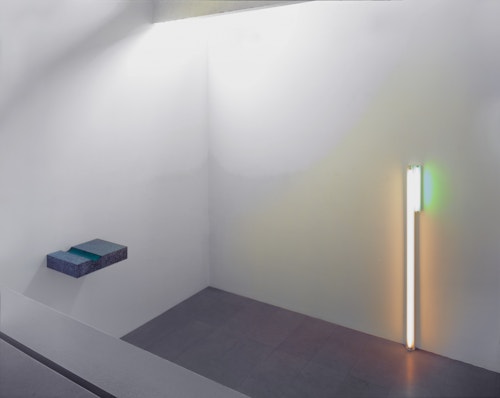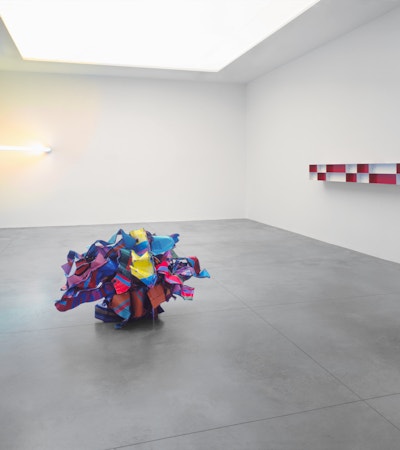
John Chamberlain, Dan Flavin, Donald Judd
This exhibition pays tribute to the use of colour in the work of three great American sculptors, John Chamberlain, Dan Flavin and Donald Judd. It also places the emphasis on colour, the way Judd saw it: as a phenomenon, an immediate sensation.
“Color will always be interpreted in a new way, so that I hardly think my use is final, in fact I think it is a beginning”, he wrote in his essay “Some Aspects of Color in general and red and black in particular” (1993). “Infinite change may be its constant nature. Color is the opposite of the projection of feeling as described by Goethe, … Color is like material. It is one way or another but it obdurately exists. Its existence as it is, is the main fact and is not what it might mean, which may mean nothing.”
For Judd, colour was one of the three most meaningful elements in art, at the same level as material and space. In his work and theoretical writings, he repeatedly mentions its essentialness and gives concrete examples of its use in the work of several fellow-artists, including John Chamberlain and Dan Flavin.


According to Judd, a work of art can only exist as a specific, individual object. He finds this individuality in the light sculptures of Dan Flavin. “The evenness of the weak light shining from neon tubes is ‘normal’ and remains unchanged despite changing color,” he writes … “Of course, the difference between color as a material and color as light is enormous. Colour on an object, always seems added, … But because the neon lamps are light sources, their colors seem given, … Placing two painted white surfaces next to each other enhances the subtlety; placing two white neon lamps next to each other, enhances the evidence. There is no difference anymore between light and colour, it becomes a single and unique phenomenon.”
In 1987, Dan Flavin, made a group of neon objects in five different colour combinations, namely pink alternating with pink, red, yellow, blue and green. As always, the artist gave the work no title. Instead he dedicated it to: “Donald Judd. Colorist”. With this dedication from one artist to another, Flavin drew attention to an aspect of Donald Judd’s work that was until then rarely recognised.
Donald Judd mainly focuses on the intricate relationship between the elements of colour, material and volume in John Chamberlain’s sculptures. Initially, Chamberlain brought together individual industrial car-parts in an “un-composed” visual unity. Similar to Judd, colour has gained a strong sensual position in his work over the years. Whereas before he sporadically altered the colours of the pre-fabricated components, from 1974 onwards, he took the liberty to paint the components and choose the colours: with many colours, spatters and stains, he strengthened or weakened volumes; he followed the curves and corners of the material or deliberately worked against them. Chamberlain knows how to make roundness into colour and colour into roundness, pushing the two into an overall unity.

